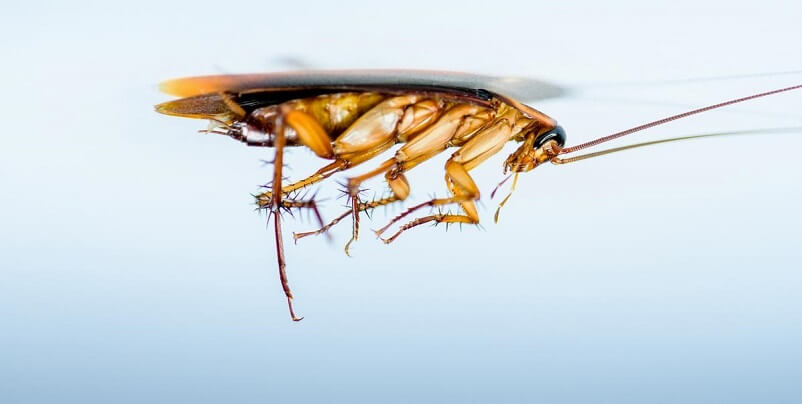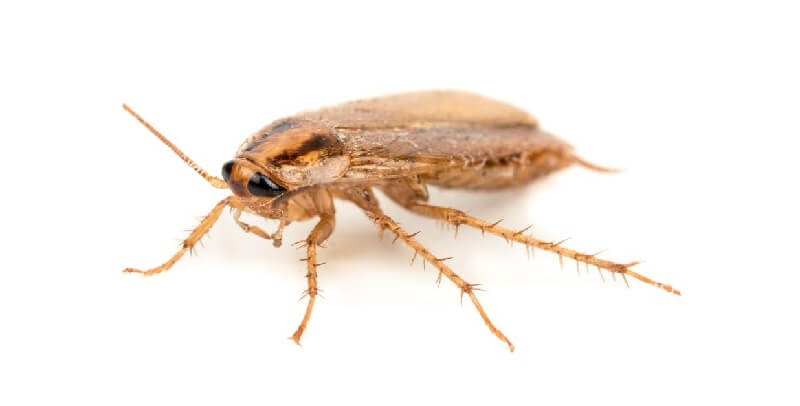Do Cockroaches Drown?

Yes, cockroaches can drown in water. Cockroaches are notoriously resilient creatures with several characteristics that allow them to survive in challenging environments. Drowning roaches, however, is possible, but they can survive submerged underwater longer than expected.
Here are some things to consider when thinking about drowning cockroaches:
- Breathing Mechanism: Cockroaches do not breathe like humans. Instead of lungs, they have a system of tubes called tracheae that deliver air directly to their cells. They have small openings called spiracles on their body segments through which they take in air.
- Survival Underwater: A cockroach can hold its breath for around 40 minutes and can survive being submerged underwater for about 30 minutes. Some species might even survive longer. So, while they can eventually be drowned, it takes a comparatively long time.
- Cockroach Eggs: Cockroach egg cases (oothecae) can be more water-resistant than adult cockroaches. If you’re trying to get rid of cockroaches by submerging them, ensure the egg cases are destroyed, or they can result in a new infestation.
- Efficiency: Drowning is only one of the efficient methods for controlling or exterminating a cockroach infestation. Other methods like bait stations, traps, diatomaceous earth, or professional extermination are typically more effective and less time-consuming.
How Long Can A Cockroach Hold Its Breath?
A cockroach can hold its breath for up to 40 minutes. This remarkable capability allows them to remain underwater for approximately half an hour. They utilize this breath-holding strategy primarily to regulate water loss from their bodies.
Can Roaches Drown In Hot Water?
Yes, cockroaches can indeed drown in hot water. When they are fully immersed in hot water, it’s primarily the heat that proves lethal rather than the water itself. Cockroaches cannot endure temperatures exceeding 125 degrees Fahrenheit when in direct contact.
Any liquid hotter than 130 degrees Fahrenheit will instantly kill them since they must maintain moisture to survive. However, water that’s slightly warm, under 95°F, might harm them but won’t necessarily kill them unless they are exposed for an extended duration.

Can Roaches Swim Underwater?
Cockroaches do not possess the ability to swim. Even when submerged underwater, they can’t swim. However, their lightweight bodies allow them to float on water surfaces, which can give the illusion that they are swimming.
At What Temperature Do Cockroaches Die?
Cockroaches are susceptible to extreme temperatures. They will perish in temperatures exceeding 120°F (49°C) within a matter of hours or days.
Conversely, they also cannot survive in freezing temperatures ranging from 0°F to 15°F (-18°C to -9°C). To exterminate cockroach eggs, they need to be exposed to temperatures either hotter than 150°F (65°C) or colder than 15°F (-9°C).
Can Roaches Swim Up The Toilet?
Generally, cockroaches cannot swim up toilets. This is mainly because they aren’t proficient swimmers and face difficulties maneuvering underwater. Even though they can sustain themselves underwater for extended periods due to their ability to hold their breath, they cannot breathe in such conditions.
Consequently, it’s improbable for cockroaches to swim up a toilet. However, there are structural issues with plumbing or unsealed gaps. In that case, you might observe a roach emerging from the bathroom.
Do Roaches Need Oxygen?
Oxygen is essential for cockroaches’ survival. They breathe in oxygen through small openings called spiracles on their thorax and abdomen. Inside their bodies, a system of tracheal tubes transports this oxygen straight to their cells.
Cockroaches undergo respiration, which transforms food into energy, using this oxygen. As a byproduct of respiration, they produce carbon dioxide expelled through the spiracles.
How Do Roaches Breathe?
Cockroaches employ a unique breathing mechanism devoid of lungs. They inhale oxygen through small openings on their bodies called spiracles. Internally, they have a tracheal system—a network of tubes—that conveys oxygen directly to their cells.
Additionally, they excrete carbon dioxide, a waste product from respiration, through these same spiracles. Moreover, they can prolong their breath by sealing their spiracles to manage their water loss.

James E. Butkovich, Pest control maven with a knack for eco-friendly & Chemical solutions. Blogger with a mission to make homes pest-free, one post at a time.